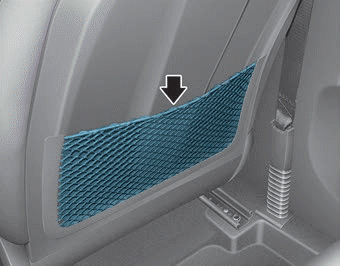Hyundai Ioniq: Sunroof / Sliding the Sunroof
Pressing the sunroof control lever backward or forward momentarily to the second detent position completely opens or closes the sunroof even when the switch is released. To stop the sunroof at the desired position while the sunroof is in operation, press the sunroof control lever backward or forward and release the switch.
Information
To minimize wind noise while driving, it is recommended that you drive with the sunroof slightly closed (stop the sunroof about 3 inch (7 cm) before the maximum slide open position).
Automatic reverse

If the sunroof senses any obstacle while it is closing automatically, it will reverse direction then stop to allow the object to be cleared.
The auto reverse function does not work if a small obstacle is between the sliding glass and the sunroof sash.
You should always check that all passengers and objects are away from the sunroof before closing it.
WARNING
Small objects that can get caught between the sunroof glass and the front glass channel may not be detected by the automatic reverse system. In this case, the sunroof glass will not detect the object and will not reverse direction.
 Sunroof Opening and Closing
Sunroof Opening and Closing
To open:
Press the sunroof control lever backward to the first detent position. Release
the switch when you want the sunroof to stop.
To close:
Press the sunroof control lever forward to the first detent position...
 Tilting the Sunroof
Tilting the Sunroof
Tilt the sunroof open:
Push the sunroof control lever upward until the sunroof moves to the desired
position.
To close the sunroof:
Push the sunroof control lever forward until the sunroof moves to the desired
position...
Other information:
Hyundai Ioniq (AE) 2017-2025 Owner's Manual: Protecting your vehicle's finish
Washing To help protect your vehicle’s finish from rust and deterioration, wash it thoroughly and frequently at least once a month with lukewarm or cold water. If you use your vehicle for off-road driving, you should wash it after each off-road trip...
Hyundai Ioniq (AE) 2017-2025 Service Manual: Rear Door Module. Repair procedures
Replacement1.Remove the rear door window glass.(Refer to Rear Door - "Rear Door Window Glass")2.Remove the rear door outside handle.(Refer to Rear Door - "Rear Door Outside Handle")3.Loosen the rear door outside handle base mounting bolt (A). Tightening torque : 2...
Categories
- Manuals Home
- 1st Generation Ioniq Owners Manual
- 1st Generation Ioniq Service Manual
- Tilt Steering / Telescope Steering
- Theft-alarm System
- Auto Door Lock/Unlock Features
- New on site
- Most important about car
Seatback pocket

The seatback pocket is provided on the back of the front passenger's seatback.
WARNING
To prevent the Occupant Classification System from malfunctioning:
